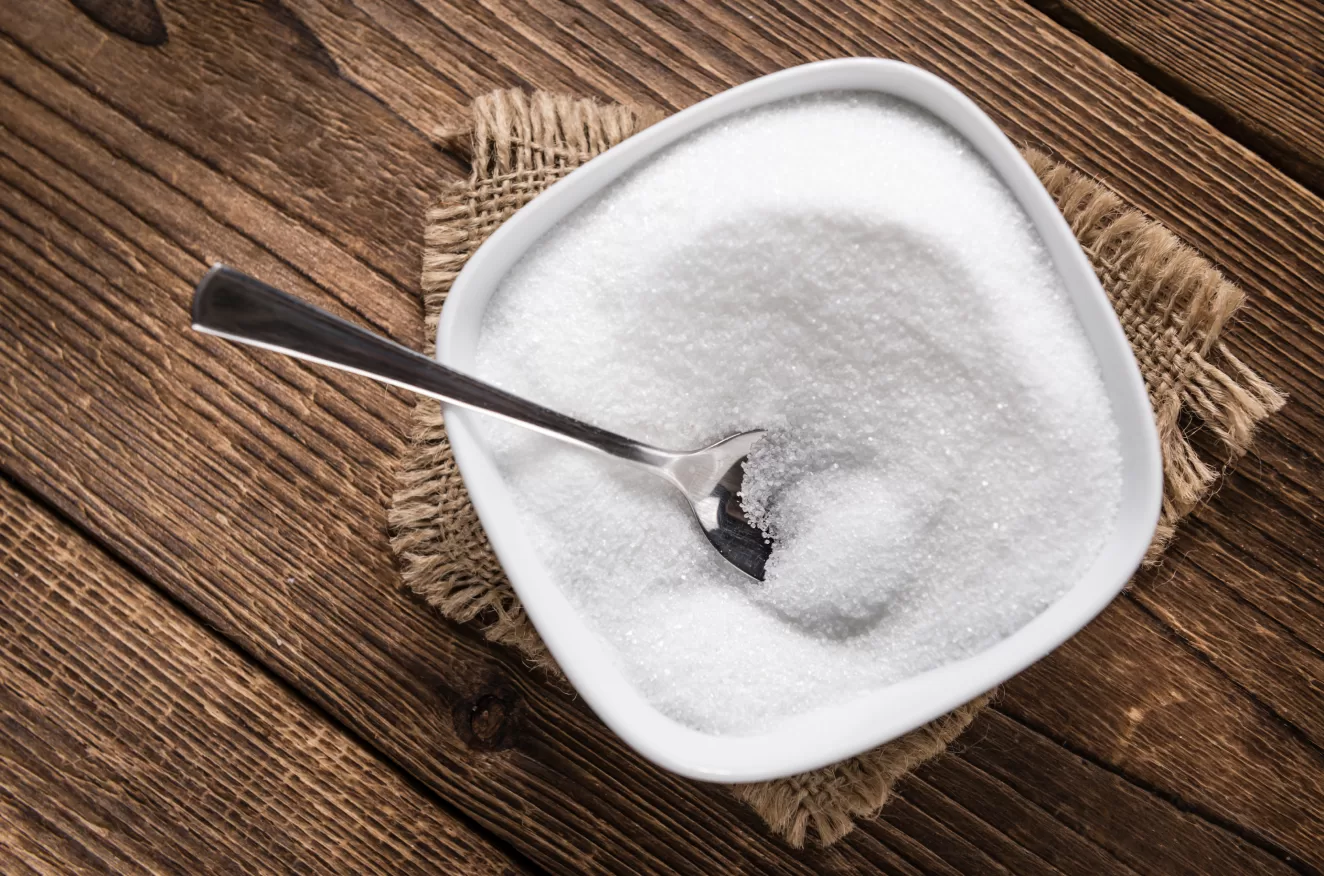- CSID Cares
- Treatment
- Sugars and Sugar Substitutes
Sucrose is basic table sugar. All individuals with Congenital Sucrase-Isomaltase Deficiency (CSID) have a significantly decreased ability to digest sucrose, because they lack the enzyme sucrase. Sucrose is known by several different names, such as table sugar, white sugar, cane sugar, beet sugar, evaporated cane juice, raw sugar, brown sugar, turbinado sugar, and others (see table below).
If you or your child have CSID, you should be vigilant about reading food labels to discover hidden sugars. Names of the types of sugar contained in a food are listed in the ingredients section of a food label, while the total sugar content is listed by weight in the nutrition facts section of a food label.
Fructose is also commonly used as a sweetener in many foods. Fructose is usually tolerated fairly well by most individuals with CSID, although it is important to introduce it slowly.

Sugar Substitutes
A sugar substitute is a food additive that mimics the taste and sweetening attributes of sugar. Some sugar substitutes are natural and some are synthetic, known as artificial sweeteners. In the United States, several sugar substitutes are approved for use, including aspartame, sucralose, neotame, acesulfame potassium, and saccharin. Although there is some ongoing controversy about whether artificial sweeteners are safe for consumption, the US Food and Drug Administration (FDA) considers all five of these listed sweeteners to be “generally recognized as safe” (GRAS).
Unfortunately, there are no studies on the effects of these sweeteners or possible long-term consequences of children consuming them. For this reason, artificial sweeteners should be used in moderation. Consult a medical professional when weighing the health risks and benefits in your unique situation.
Sugar Alcohols
Some non-sugar sweeteners are known as sugar alcohols. Sugar alcohols are generally less sweet than sucrose. Sugar alcohols are usually not used when preparing food at home but are widely used in processed foods. Sugar alcohols are considered nutritive sweeteners because they provide calories, but fewer calories than sugar. Sugar alcohols are not completely absorbed by the body, which is why they sweeten with fewer calories than sugar.
A high intake of foods containing some sugar alcohols may lead to gas and diarrhea for all people, not just those with CSID. Contrary to their name, sugar alcohols are neither sugars nor alcohols. Instead, they are carbohydrates with chemical structures that resemble sugar and alcohol. As with artificial sweeteners, the FDA regulates the use of sugar alcohols.
FDA-approved sugar alcohols and novel sweeteners include erythritol, hydrogenated starch hydrolysates, isomalt, lactitol, maltitol, mannitol, sorbitol, xylitol, and stevia preparations that are highly refined (for example, Pure Via®, Truvia®). Currently, the FDA has not approved the use of whole-leaf stevia or crude stevia extracts for use as a sweetener. Approval by the FDA does not imply all these sweeteners are appropriate for you to use. See the table below for acceptable sweeteners and sweeteners to avoid.
Acceptable Sweeteners and Sweeteners to Avoid
|
Sweeteners Tolerated by Most Individuals with CSID
|
|
|---|---|
|
Aspartame
(NutraSweet®) |
|
|
Dextrose
(another name for glucose) |
|
|
Fructose
(crystalline fructose or crystalline fructose syrup) |
|
|
Glucose
|
|
|
Lactose
(milk sugar) |
|
|
Sweeteners Tolerated by Some Individuals with CSID
|
|
|---|---|
|
Acesulfame-K
(acesulfame potassium, Ace-K, Sunett®, Sweet One®) |
|
|
Agave nectar
|
|
|
Corn syrup
|
|
|
Equal® Original
in blue packaging |
|
|
High fructose corn syrup
(HFCS) |
|
|
Honey
|
|
|
Hydrogenated starch hydrosylates
(HSH) |
|
|
Inverted sugar syrup
(invert sugar) |
|
|
Maltose
(malt sugar) |
|
|
Saccharin
(Sweet’N Low®) |
|
|
Stevia
(Truvia®, Pure Via®) |
|
|
Sucralose
(Splenda®) |
|
|
Sugar alcohols
(sorbitol, mannitol, maltitol, xylitol, erythritol, lactitol) |
|
|
Sweeteners to AVOID by All Individuals with CSID
|
|---|
|
Beet sugar
|
|
Brown sugar
|
|
Cane juice
|
|
Cane sugar
|
|
Caramel, caramel-based sauces
|
|
Coconut sugar
|
|
Confectioner’s sugar
|
|
Date sugar
|
|
Maple syrup
|
|
Molasses
|
|
Raw sugar
|
|
Sucanat™
(natural cane sugar) |
|
Sucrose
|
|
Sugar
|
|
Turbinado sugar
|

